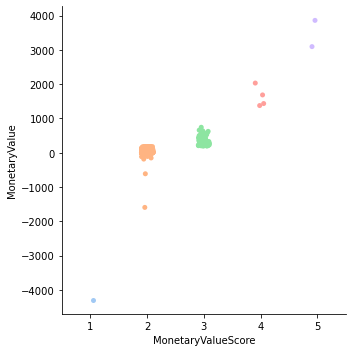Customer Segmentation - RFM
Overview
Recency-Frequency-Monetary Value (RFM) is a quantitative technique used to analyze & group customers based on their purchase history by assigning numerical values (1 to K) for customer groups. In this study, I computed RFM for each customer based on their purchases (using definitions below), then applied the K-Means clustering algorithm, which aims to partition N-observations into K-clusters by assigning each observation a random cluster number (0 to K), based on nearest ‘Means’.
Using this randomly generated cluster numbers (0 to 4) as scores, I re-structured it to a scale of 1 to 5 and assigned the customer group that is recent, frequent, and generates high monetary value a higher score.
- Recency: Days since the last transcation.
- Frequency: Transactions Count.
- Monetary Value: Average Monetary Value Generated.
Recency, Frequency and Monetary Value Clusters



Data Source
I used Online Retail dataset from Kaggle.